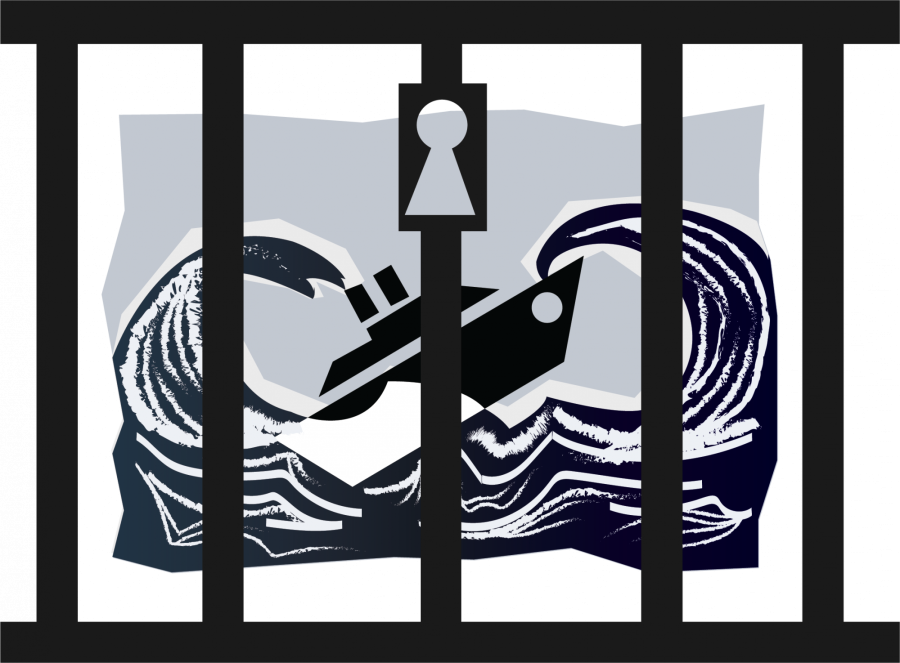Writer and activist Joe Watson knew how dangerous an outbreak such as the coronavirus could be for prisoners because he was one just three years ago.
For Watson and other organizers of educational programs for incarcerated people, such as the Prison Education Project and “Free Time: Building a Community of Mentors for Incarcerated Writers,” the opportunities for and wellbeing of prisoners that they so ardently advocated for were being challenged now more than ever.
The University of Arizona Museum of Art and Prison Education Project’s exhibition “HobbyCraft” and the UA Poetry Centers “Free Time: Building a Community of Mentors for Incarcerated Writers” were both halted in the midst of mass cancellations.
Watson’s workshop “Free Time: Building a Community of Mentors for Incarcerated Writers” stemmed from his personal experience with writing and mentorship while incarcerated. The monthly workshop focused on incarcerated writers’ writing on criminal justice reform and mass criminalization and the efforts to change the existing prison system.
“We don’t take into consideration the circumstances under which people commit crimes. We profess that we celebrate second chances in America but offer real second chances to so few who end up in the system,” Watson said.
RELATED: University of Arizona organization adapts to being online
According to the UA Poetry Center website, prison was a place where creativity thrived stating, “It’s true that many writers are born in prison, where minds are free to explore possibilities that the body cannot. But because most are incarcerated within facilities so rural and out-of-reach, the extreme isolation that prisoners endure paralyzes the drive and confidence needed to be creative.”
However, this isolation was not physical, according to Watson.
“Our jails and prisons are a lot like ships at sea,” Watson said. “They’re very confined, cramped — people are close together. They’re overcrowded. The only way to really reduce that threat of widespread infection is by reducing our jail and prison populations.”
Watson echoed the sentiment inscribed next to incarcerated artist D.H.’s piece titled “Minor Setback” at the “HobbyCraft” exhibition.
“This is for most of us who are just passing by in this place,” D.H. wrote. “And for us to remember, that this does not define us as a person, we can still make something of ourselves either during or after this.”
Watson discussed how most prisoners are not spending their whole lives in prison.
“So many of these folks are going to go home this year anyway. 95% of our prison population is going to go home at some point. Most people don’t spend the rest of their lives in prison,” Watson said, citing the Bureau of Justice Statistics.
Additionally, over half of the people in Arizona’s criminal justice system are on parole, according to the Prison Policy Initiative.
RELATED: Tucson restaurants feed the community through tough times
Despite the potential outbreak, educators found small ways to continue the students’ education, according to Celeste O’Brien, the program coordinator of the Prison Education Project.
The UA English Department’s Prison Education Project was organized as an education series of lectures and classes. Subjects taught within the project included art and writing in addition to other subjects varying by faculty specialties.
“We’re kind of in a hiatus because we are not permitted to go in. The prisons closed on March 13 to all external visitors,” O’Brien said. “So, what we have done is we sent letters in to our students to say we’re thinking of you and here’s the kinds of things we’d like you to keep doing. A couple of our teachers have been sending in some readings and assignments.”
O’Brien’s main concern was for the incarcerated students.
“I don’t have a lot of concern about the program itself. I think we have a dedicated cadre of volunteers and faculty members. It would be great to obtain additional funding, that’s always the hard part,” O’Brien continued, “I believe all of us are concerned for the well being of our incarcerated students and anybody incarcerated. It’s a scary place to be when there’s a potential health outbreak.”
Scott Gleason, a former student of the Prison Education Project whose work was featured at the “HobbyCraft” exhibit, shared O’Brien’s concern.
“I served 6.5 years and was released Aug 31, 2019. It’s not that long ago, but with everything that has happened in 2020 it feels like it’s been years already,” Geason said. “But no matter how much time passes from my release I will never forget certain things about the experience. I have many concerns for the ones on the inside, but as pertains to the current pandemic: It is impossible to practice safe social distancing practices on any prison yard, and access to disinfecting cleaning supplies is a joke. Medical staff will mistreat or send you away on the best day, so I don’t know what they would do with someone sick in a pandemic.”
As contexts have changed, resilience — the theme of the “HobbyCraft” exhibition — took on a new meaning according to Olivia Miller, curator of exhibitions for UAMA and lecturer for the Prison Education Project.
“That exhibition is also taking on new meaning in light of what’s happening today, where everyone is sort of forced to find their own resiliency right now,” O’Brien said. “I don’t want to speak for them but I imagine the situation is pretty scary for them. There’s no way for them to stay at home. Obviously, viruses are a big concern for prisons, so I’m sure this just adds another layer to the complicated lives they live there.”
Follow Ella McCarville on Twitter















